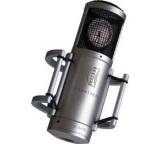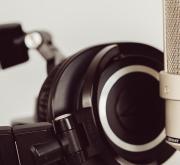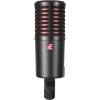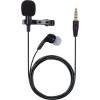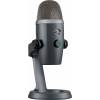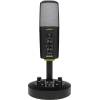Beliebte Filter: Anschluss
715 Ergebnisse entsprechen den Suchkriterien
-
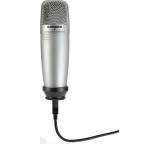
Gut
1,9
Samson C01U
- Typ: Instrumentenmikrofon
- Technologie: Kondensator
- Anschluss: USB
Zum Produkt
-
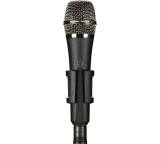
Sehr gut
1,2
Telefunken Elektroakustik M80
- Typ: Gesangsmikrofon
- Technologie: Dynamisch
- Richtcharakteristik: Superniere
Zum Produkt
-
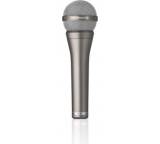
Gut
1,7
Beyerdynamic TG V90r
- Typ: Gesangsmikrofon
- Technologie: Bändchen
- Richtcharakteristik: Niere
Zum Produkt
-
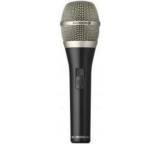
Gut
1,7
Beyerdynamic TG V50d
- Typ: Gesangsmikrofon
- Technologie: Dynamisch
- Richtcharakteristik: Niere
Zum Produkt
-
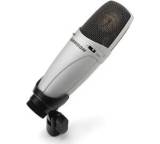
Sehr gut
1,0
-
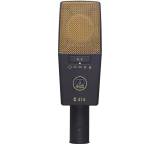
Sehr gut
1,4
AKG C 414 XL II
- Typ: Instrumentenmikrofon, Gesangsmikrofon
- Technologie: Kondensator
- Richtcharakteristik: Bidirektional (Acht), Hyperniere, Niere, Omnidirektional (Kugel)
Zum Produkt
-
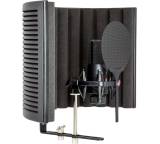
Gut
2,0
SE Electronics X1 S Studio Bundle
- Typ: Gesangsmikrofon
- Technologie: Kondensator
- Richtcharakteristik: Niere
Zum Produkt
-
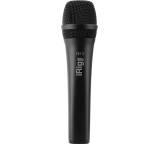
Sehr gut
1,4
IK Multimedia iRig Mic HD 2
- Typ: Instrumentenmikrofon, Gesangsmikrofon
- Technologie: Elektret, Kondensator
- Richtcharakteristik: Niere
Zum Produkt
-
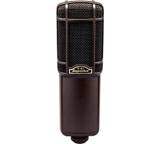
ohne Endnote
Superlux R102
- Typ: Podcastmikrofon, Instrumentenmikrofon, Gesangsmikrofon
- Technologie: Bändchen
- Richtcharakteristik: Bidirektional (Acht)
Zum Produkt
-
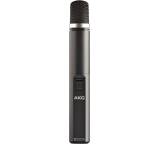
Sehr gut
1,2
AKG C1000 S MKIV
- Typ: Reportermikrofon
- Technologie: Kondensator
- Richtcharakteristik: Hyperniere, Niere
Zum Produkt
-
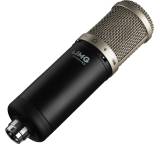
Sehr gut
1,5
IMG Stage Line ECMS-90
- Typ: Instrumentenmikrofon, Gesangsmikrofon
- Technologie: Kondensator
- Richtcharakteristik: Niere
Zum Produkt
-
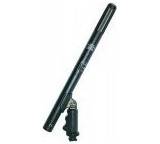
Befriedigend
3,0
Thomann The T.Bone EM-9600
- Typ: Kamera-Mikrofon, Reportermikrofon, Richtmikrofon, Gesangsmikrofon
- Technologie: Kondensator
- Richtcharakteristik: Superniere
Zum Produkt
-
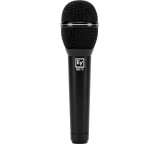
Sehr gut
1,3
Electro-Voice ND76
- Typ: Gesangsmikrofon
- Technologie: Dynamisch
- Richtcharakteristik: Niere
Zum Produkt
-
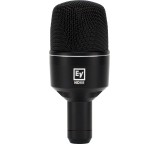
Sehr gut
1,0
Electro-Voice ND68
- Typ: Instrumentenmikrofon
- Technologie: Dynamisch
- Richtcharakteristik: Superniere
Zum Produkt
-
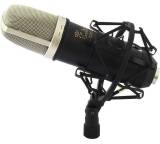
ohne Endnote
Thomann The T.Bone SC450 USB
- Typ: Instrumentenmikrofon, Gesangsmikrofon
- Technologie: Kondensator
- Richtcharakteristik: Niere
Zum Produkt
-
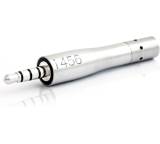
Sehr gut
1,5
MicW i456 Cardioid Recording Microphone
- Typ: Handy-Mikrofon
- Technologie: Kondensator
- Richtcharakteristik: Niere
Zum Produkt
-
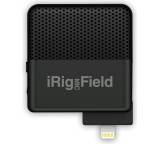
Gut
2,4
IK Multimedia iRig Mic Field
- Typ: Handy-Mikrofon
- Technologie: Kondensator
- Richtcharakteristik: Niere
Zum Produkt
-
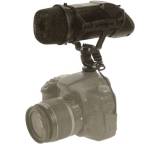
Gut
1,8
Dörr CV03
- Typ: Kamera-Mikrofon, Richtmikrofon
- Technologie: Kondensator
- Richtcharakteristik: Stereo, Superniere
Zum Produkt
-
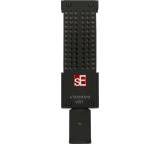
Sehr gut
1,5
SE Electronics Voodoo VR1
- Typ: Instrumentenmikrofon
- Technologie: Bändchen, Dynamisch
- Richtcharakteristik: Bidirektional (Acht)
Zum Produkt
-
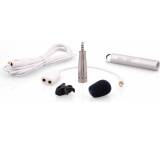
Gut
2,5
MicW i266 Kit
- Typ: Handy-Mikrofon
- Technologie: Elektret, Kondensator
- Richtcharakteristik: Niere
Zum Produkt
-
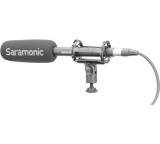
Sehr gut
1,2
Saramonic SoundBird T3
- Typ: Kamera-Mikrofon, Richtmikrofon
- Richtcharakteristik: Niere
- Anschluss: XLR
-

Befriedigend
2,6
Dörr CWA-120
- Typ: Kamera-Mikrofon, Richtmikrofon
- Technologie: Kondensator
- Richtcharakteristik: Stereo
Zum Produkt
-
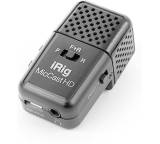
ohne Endnote
IK Multimedia iRig Mic Cast HD
- Typ: Handy-Mikrofon
- Technologie: Elektret, Kondensator
- Richtcharakteristik: Bidirektional (Acht), Direktional (Keule)
-
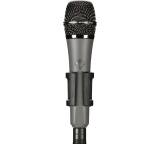
Sehr gut
1,0
Telefunken Elektroakustik M81 Universal Dynamic
- Typ: Instrumentenmikrofon, Gesangsmikrofon
- Technologie: Dynamisch
- Richtcharakteristik: Superniere
Zum Produkt
-
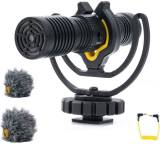
Sehr gut
1,4
Deity V-Mic D4 Duo
- Typ: Kamera-Mikrofon
- Technologie: Kondensator
- Richtcharakteristik: Niere
-
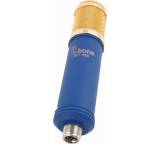
Sehr gut
1,5
Thomann The T.Bone SCT 800
- Typ: Instrumentenmikrofon, Gesangsmikrofon
- Technologie: Röhre
- Richtcharakteristik: Niere
Zum Produkt
-
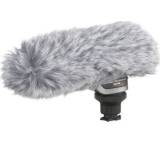
Gut
1,8
-
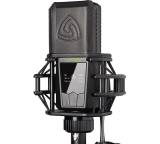
ohne Endnote
Lewitt LCT 540 S
- Typ: Instrumentenmikrofon, Gesangsmikrofon
- Technologie: Kondensator
- Richtcharakteristik: Niere
Zum Produkt
-
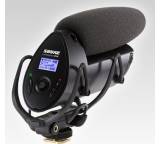
Sehr gut
1,0
Shure VP83F LensHopper
- Typ: Kamera-Mikrofon, Richtmikrofon
- Technologie: Elektret, Kondensator
- Richtcharakteristik: Superniere, Direktional (Keule)
Zum Produkt
-
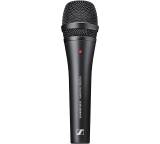
Sehr gut
1,3
Sennheiser HandMic digital
- Typ: Gesangsmikrofon
- Technologie: Dynamisch
- Richtcharakteristik: Niere
Zum Produkt
-
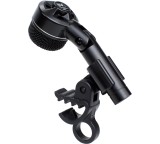
Sehr gut
1,0
Electro-Voice ND44
- Typ: Instrumentenmikrofon
- Technologie: Dynamisch
- Richtcharakteristik: Niere
Zum Produkt
-
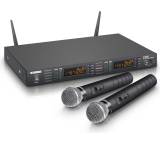
Sehr gut
1,0
LD Systems WS 1G8 HHD2
- Typ: Funkmikrofon, Gesangsmikrofon
- Technologie: Dynamisch
- Richtcharakteristik: Niere
Zum Produkt
-
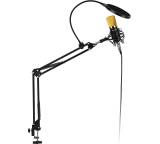
Gut
1,9
Aukey GD-G1
- Typ: Podcastmikrofon, Instrumentenmikrofon, Gesangsmikrofon
- Technologie: Kondensator
- Richtcharakteristik: Niere
Zum Produkt
-
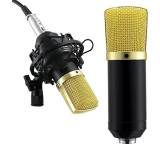
ohne Endnote
Tonor BM-700
- Typ: Handy-Mikrofon, Gesangsmikrofon
- Technologie: Kondensator
- Anschluss: XLR
Zum Produkt
-
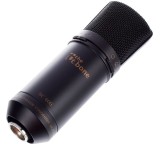
Sehr gut
1,0
Thomann The t.bone SC 600
- Typ: Instrumentenmikrofon, Gesangsmikrofon
- Richtcharakteristik: Niere, Omnidirektional (Kugel)
- Anschluss: XLR
Zum Produkt
-
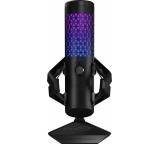
ohne Endnote
Asus ROG Carnyx
- Typ: Podcastmikrofon, Tischmikrofon
- Technologie: Kondensator
- Richtcharakteristik: Niere
Zum Produkt
-
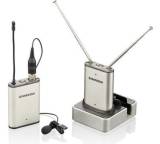
ohne Endnote
Samson AirLine Micro Wireless Camera System
- Typ: Kamera-Mikrofon
- Technologie: Kondensator
- Richtcharakteristik: Omnidirektional (Kugel)
Zum Produkt
-
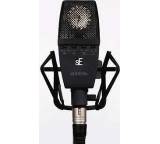
Sehr gut
1,5
SE Electronics sE 4400a
- Typ: Instrumentenmikrofon, Gesangsmikrofon
- Technologie: Kondensator
- Richtcharakteristik: Superniere, Bidirektional (Acht), Niere, Omnidirektional (Kugel)
Zum Produkt
-
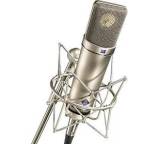
Sehr gut
1,0
Neumann U 87 Ai
- Typ: Instrumentenmikrofon, Gesangsmikrofon
- Technologie: Kondensator
- Richtcharakteristik: Bidirektional (Acht), Niere, Omnidirektional (Kugel)
Zum Produkt




